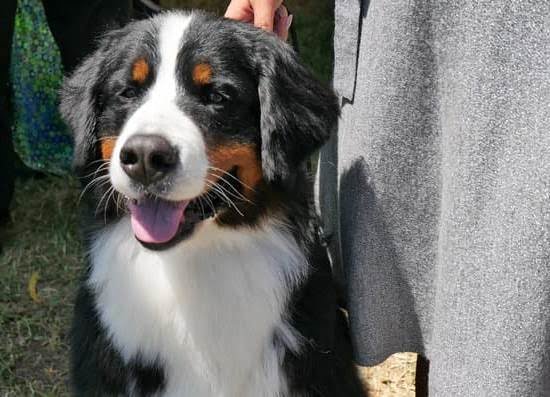Introduction
Therapy dogs are an incredible resource to those who need a little extra joy and comfort in their lives. These animals are specially trained to provide comfort, security, and unconditional love. Training a therapy dog is an important step in preparing these furry friends to improve people’s quality of life.
Before undergoing any type of specialized training, most therapy dogs should go through basic obedience lessons such as crate training, leash walking and learning commands like sit, down and stay. Once those skills have been mastered, the next step is for the dog to become certified for therapy work. The details vary depending on the organization you choose but typically this means completing a certification test with your dog that assesses its suitability for visiting patients in hospitals, nursing homes or schools.
In additional to the specific skills required for certification, therapy dogs need specialized training specific to their role Usually this will involve teaching them how to act around restricted areas and medical equipment; remaining calm when surrounded by medical instruments or patients ; not reacting negatively if touched or hugged; being able to blend into different environments such as libraries; staying in one spot (doggy bed) during meetings; ignoring distractions such as people talking or loud noises; responding appropriately if someone sneezes or coughs near them; understanding when it is safe to lick skin ( no open wounds); being gentle when handling children and elderly adults; responding calmly when alert sounds occur; getting accustomed to various smells (medical supplies, food etc).
Overall, therapy dogs need lots of socialization before they can start working. They must be up-to-date on vaccinations and spayed/neutered before they can visit anywhere but once all these steps are completed, a well-trained therapy dog can be a great help to people in need – providing companionship, support and happiness!
Exploring Different Breeds and Their Specific Requirements
Therapy dogs come in all shapes and sizes, but regardless of the breed, they will require some kind of obedience training. During the training process, a handler must be able to show that their dog is obedient, social, and well-balanced. In terms of obedience, the primary focus should be on the five basic commands—sit, stay, come, heel and down. It should also include learning to walk calmly on a leash and interact with strangers safely.
In addition to basic commands, most therapy dogs must also know how to stand still for an extended period of time so that they can provide comfort or emotional support for someone in need. For most breeds, this means teaching them how to tolerate petting from strangers, which may feel uncomfortable at first but ultimately helps them become accustomed to being around others.
Different breeds will have different requirements depending on the situation and purpose for which they are trained. For example, some may require additional physical activities such as pulling a cart or leading a blind or disabled person. In these cases, specific exercises may be necessary to make sure they are physically fit enough to do their job properly. Additionally, task-specific commands should also be included as part of their training routine such as opening and closing doors or pressing mechanical objects such as buttons or levers. Finally, neurological stimulation can help strengthen the bond between dog handler even further and ensure that any additional behaviors desired (e.g., working off leash) remain intact during evaluation or certification testing processes required by agencies such as Therapy Dogs International or Delta society approved facilities..
The Benefits of Professional Training
Therapy dogs need specialized training and socialization in order to help people. The exact type of training varies based on the specific service a therapy dog will be providing and the environment they will be working in. Generally, these specialty trained dogs must pass appropriate behavior tests to ensure they are able to perform their job accordingly. A qualified canine mentor or instructor can teach basic obedience commands as well as desensitization procedures that may help the dog stay composed during stressful situations with their owner. Professional trainers also introduce socialization behaviors such as calmness around other people or animals, allowing strangers to pet them, walking with their handler in public places, and responding to one-word commands. The overall goal of training is to prepare the therapy dog for all possible scenarios they might experience while performing their job. With professional training, a therapy dog can gain the confidence needed for success and provide many benefits such as improved mental health, emotional regulation and sensory integration for those seeking assistance from a therapy animal.
Essential Elements of Starting a Therapy Dog Training Program
1. Establish Network: Therapy dogs provide important services to many people, so it is essential to establish a network of individuals who understand their duties and responsibilities as service dog handlers. Develop relationships with local support groups, schools, hospitals and other organizations that may benefit from therapy dog visits.
2. Choose the Right Dog: The right dog for therapy work will be friendly, calm, gentle and responsive to basic obedience commands. Consider traits such as intelligence, friendliness to strangers and ease of training when selecting a dog for the program.
3. Create Appropriate Training Program: The best training program should encompass all aspects of handling and service delivery, including rudimentary skills such as sit-stay/base course development; basic obedience through advanced commands; problem solving behavior modification techniques; introductions to service settings and proper etiquette; appropriate body language use in different environments; grooming techniques like desensitization to common medical practices such as temperature checking or injections; stress relief techniques for working in difficult settings or challenging situations with clients; methods for evaluating potential stimuli that may trigger unwanted behaviors from the dog (i.e., loud noises); identification of spatial needs between handler and canine team members in public spaces with large crowds; safety protocols for transporting animals safely throughout settings where children or vulnerable adults are present; CPR certification for care takers or handlers who serve during medical crises; tracking proactivity behaviors such as check-ins that enable caregivers or social workers to speak with clients before walking away; reducing stress levels by speaking quietly when onsite versus giving excessive verbal corrections while in session — this goes a long way towards building acceptance and trust among those receiving visits from your facility’s therapy teams.
Establishing Kind and Effective Guidance
Therapy Dogs require specialized training to prepare them for the specific tasks they’ll be undertaking. This type of training should focus on patience and obedience, creating an atmosphere of kindness and potentially calmness for those interacting with the therapy dog. During these sessions, it’s important to establish kind and effective guidance that the dog can learn from. Therefore, positive reinforcement is important when teaching the dog certain commands or desired behaviors. This could include verbal affirmations such as “good job!”, patting their back or head, praising them with treats, or other rewards that help keep their attention while at the same time not overstimulating them in any way. Additionally, during these sessions it’s also beneficial to provide consistency in repetition in order for the dog to better understand what is being asked during each interaction. Adjusting even small dietary and environmental factors can also have a tremendous effect on a therapy dog’s demeanor; stress management exercises such as massage therapy and aromatherapy may also be helpful in maintaining that desired state of calmness required of a therapy animal.
Preparing Your Dog for Visits and Public Outings
Therapy dogs need specific training to become certified, so it’s important to take the time to properly train your pup. First and foremost, they should be taught basic obedience commands like sit, stay, come, and heel. This helps create a safe environment for both the dog and those who are engaging with him or her. It is also necessary for a therapy dog to be up-to-date on their vaccinations and parasite prevention.
In addition to obedience criteria, special training should focus on socialization around people of all ages and backgrounds, as well as other animals. Positive reinforcement should be used in order encourage cooperative behaviour in crowds and unfamiliar situations. Therapy dogs must also learn impulse control when around food or other tempting stimuli. They should target or touch certain objects or parts of their body with minimal visual cues from the handler and accept being handled by unfamiliar individuals during visits. Finally, they should be routinely exercised both physically and mentally to maintain fitness levels and prevent boredom or overstimulation while visiting a facility.
Advancing Your Dog’s Training Abilities
Therapy dogs need to have a strong foundation in basic obedience commands such as sit, stay, come, leave it, and heel. They must be able to react well and remain calm in unexpected or stressful situations. Therapy dogs should also be accustomed to being handled by strangers and groomed regularly. Other important things for them to learn is how to politely greet people with four on the floor (not jumping), ignoring distractions, and walking on a loose leash.
Further training will include socialization skills with other dogs as well as people of different ages, races, genders and abilities. A Therapy Dog should also be comfortable in all settings – at home, out in public settings such hospital waiting rooms or nursing homes – with multiple stimuli present at the same time such as loud noises or an increase in people traffic. Additionally, teaching further commands may help the Therapy Dog better respond to the particular needs of its owners. This can include teaching the dog hand signals for assistance tasks like helping their owner into bed or getting items from higher shelves. If applicable, early warning signals may also be trained so that should their owner show signs of epileptic seizure or a panic attack then their devoted therapy dog could give a response which alarms an appropriate responsible adult for assistance during times of high stress for both dog and his owner alike.
Bonding and Connecting with Your Dog through Training
The first step in training your therapy dog is establishing a bond. Spending time together, playing and engaging in activities that your dog enjoys helps to build trust and fosters understanding between you and your pet. Positive reinforcement such as treats, verbal or physical praise, or even new toys will help to strengthen the connection while making sure training remains fun and rewarding. You should also introduce basic commands such as ‘sit’, ‘stay’, and ‘come’ early on in the process.
Once you have established this bond with your therapy dog it’s important to move onto further training which includes exposure to different people and environments. Visiting places such as parks, hospitals, nursing homes, schools – anywhere that therapy dogs may be needed – is essential both for making sure your dog is ready for the task and comfortable when out in public. Have them practice specific tasks such as sitting next to someone who needs comfort or simply lying down by their feet without being disruptive or anxious. It can sometimes be difficult introducing a pet into crowded areas but gradually increasing exposure via a slow and steady approach can help get them accustomed over time. Furthermore, ensure you keep up with regular upkeep of all commands too; consistency breeds repetition which further reinforces behavior positively.
Conclusion
To achieve success in providing therapeutic support for both dog and human, a therapy dog must go through a specific type of training. The training typically varies in length according to the desired purpose for the therapy service. Basic training should contain basic commands and commands related to working with clients, such as sit-stay and down-stay. Additionally, this kind of training should include proper socialization to get the dog comfortable with different types of people and environments they may encounter while on visits. Furthermore, the dog should be taught leash manners so it can keep calm while meeting clients or navigating its way inside facilities.
In addition to its regular behavioral training, a therapy dog should also receive obedience classes. These classes provide additional reinforcement of basic commands and help reinforce good behaviors that are essential when working with others in a therapeutic setting. Further reinforcing good traits will help it become more reliable while engaging with facility guests. And finally, although not always required depending on the type of therapy being provided, refresher courses are recommended every 6 months as it is important that the canine partner remains well versed in service performance expectations for safety reasons. With adequate training and practice, these furry friends can succeed in their therapeutic roles perfectly complementing humans who seek this type of service from them – reaffirming that unbreakable bond between dogs and humans!

Welcome to the blog! I am a professional dog trainer and have been working with dogs for many years. In this blog, I will be discussing various topics related to dog training, including tips, tricks, and advice. I hope you find this information helpful and informative. Thanks for reading!





